Oedematous Skin: A Comprehensive Review of the Oedematous Skin Disease Affecting Buffalo in Egypt
What is the etiology of oedematous skin disease in buffalo in Egypt? How does the causative agent Corynebacterium pseudotuberculosis cause the disease? What are the clinical signs, histopathology, and mode of transmission of this disease? How can it be treated and controlled?
Etiology and Microbiology of Oedematous Skin Disease
This review provides a comprehensive overview of the oedematous skin disease (OSD) affecting buffalo in Egypt. The main causative agent is identified as Corynebacterium pseudotuberculosis serotype II. The virulence factors of this bacterium, particularly the exotoxin phospholipase D and the lipid contents of its cell wall, are the major contributors to the pathogenesis of OSD.
Clinical Signs and Pathogenesis of Oedematous Skin Disease
The clinical signs of OSD in buffalo include edema, hyperemia, and skin lesions. The mechanism of pathogenesis involves the action of the exotoxin phospholipase D and the lipid components of the C. pseudotuberculosis cell wall, which lead to tissue damage and the characteristic clinical presentation.
Histopathological Findings in Oedematous Skin Disease
Histopathological examination of affected skin reveals various changes, including edema, necrosis, and inflammatory cell infiltration. These findings provide important insights into the underlying pathological processes driving the development of OSD.
Transmission and Epidemiology of Oedematous Skin Disease
The review discusses the mode of transmission of C. pseudotuberculosis among buffalo, which involves the hematophagous fly Hippobosca equina. This vector-borne transmission is a crucial factor in the epidemiology of OSD and has important implications for disease control.
Immunological Aspects of Oedematous Skin Disease
The immune response to C. pseudotuberculosis infection and its role in the pathogenesis of OSD are examined. Understanding the immunological aspects of this disease is crucial for the development of effective treatment and control strategies.
Treatment and Control of Oedematous Skin Disease
The review explores the available treatment options for OSD, as well as strategies for disease control. The identification of H. equina as a vector for C. pseudotuberculosis transmission has led to the development of targeted control measures that can help mitigate the impact of this disease on buffalo populations in Egypt.
Conclusion
In summary, this comprehensive review provides a detailed understanding of the oedematous skin disease affecting buffalo in Egypt. It covers the etiology, microbiology, clinical presentation, pathogenesis, histopathology, transmission, immunological aspects, and management of this important disease, offering valuable insights for veterinary researchers and practitioners.
Oedematous skin disease (OSD) is a significant health concern for buffalo populations in Egypt. This review provides a comprehensive overview of the disease, including its etiology, microbiology, clinical signs, pathogenesis, histopathological findings, transmission, immunological aspects, and management strategies.
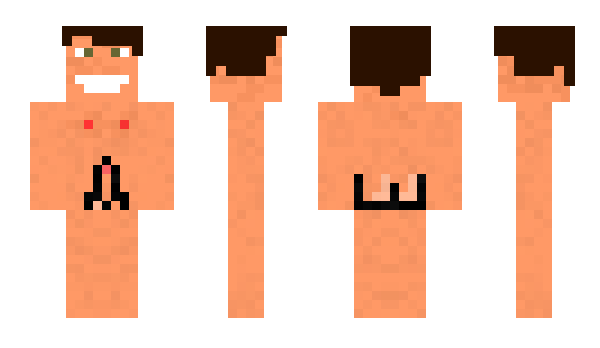
The main causative agent of OSD is identified as Corynebacterium pseudotuberculosis serotype II. The virulence factors of this bacterium, particularly the exotoxin phospholipase D and the lipid contents of its cell wall, are the major contributors to the pathogenesis of the disease. The clinical signs of OSD include edema, hyperemia, and skin lesions, which result from the tissue-damaging effects of the bacterial toxins and cell wall components.
Histopathological examination of affected skin reveals various changes, such as edema, necrosis, and inflammatory cell infiltration, which provide valuable insights into the underlying pathological processes. The review also discusses the mode of transmission of C. pseudotuberculosis among buffalo, which involves the hematophagous fly Hippobosca equina. This vector-borne transmission is a crucial factor in the epidemiology of OSD and has important implications for disease control.
The immune response to C. pseudotuberculosis infection and its role in the pathogenesis of OSD are also examined. Understanding the immunological aspects of this disease is crucial for the development of effective treatment and control strategies.

The review explores the available treatment options for OSD, as well as strategies for disease control. The identification of H. equina as a vector for C. pseudotuberculosis transmission has led to the development of targeted control measures that can help mitigate the impact of this disease on buffalo populations in Egypt.
In conclusion, this comprehensive review provides valuable insights into the oedematous skin disease affecting buffalo in Egypt. The detailed information presented on the etiology, microbiology, clinical presentation, pathogenesis, histopathology, transmission, immunological aspects, and management of OSD will be of great interest to veterinary researchers and practitioners working to address this important health issue.
Oedematous skin disease of buffalo in Egypt
Review
. 2001 May;48(4):241-58.
doi: 10.1046/j.1439-0450.2001.00451.x.
S A Selim
1
Affiliations
Affiliation
- 1 Center for Biotechnology Services and Researches, Veterinary Faculty, Cairo University, Giza, Egypt.
PMID:
15129580
DOI:
10.1046/j.1439-0450.2001.00451.x
Review
S A Selim.
J Vet Med B Infect Dis Vet Public Health.
2001 May.
. 2001 May;48(4):241-58.
doi: 10. 1046/j.1439-0450.2001.00451.x.
1046/j.1439-0450.2001.00451.x.
Author
S A Selim
1
Affiliation
- 1 Center for Biotechnology Services and Researches, Veterinary Faculty, Cairo University, Giza, Egypt.
PMID:
15129580
DOI:
10.1046/j.1439-0450.2001.00451.x
Abstract
This review covers a historical view and etiology of oedematous skin disease which affects buffalo in Egypt, the microbiology of Corynebacterium pseudotuberculosis causing the disease: its virulence; clinical signs; mechanism of pathogenesis; histopathology; mode of transmission; immunological aspects; treatment and control. It is concluded that C. pseudotuberculosis serotype II is the main cause of OSD and exotoxin phospholipase D and its lipid contents of the cell wall are the major causes of pathogenesis. After declaring the role of Hippobosca equina in transmission of the causative agent among buffaloes, control of OSD is now available.
It is concluded that C. pseudotuberculosis serotype II is the main cause of OSD and exotoxin phospholipase D and its lipid contents of the cell wall are the major causes of pathogenesis. After declaring the role of Hippobosca equina in transmission of the causative agent among buffaloes, control of OSD is now available.
Similar articles
Comparative genomic analysis between Corynebacterium pseudotuberculosis strains isolated from buffalo.
Viana MVC, Figueiredo H, Ramos R, Guimarães LC, Pereira FL, Dorella FA, Selim SAK, Salaheldean M, Silva A, Wattam AR, Azevedo V.
Viana MVC, et al.
PLoS One. 2017 Apr 26;12(4):e0176347. doi: 10.1371/journal.pone.0176347. eCollection 2017.
PLoS One. 2017.PMID: 28445543
Free PMC article.Relation of lipid content and exotoxin production to virulence of Corynebacterium pseudotuberculosis in mice.

Muckle CA, Gyles CL.
Muckle CA, et al.
Am J Vet Res. 1983 Jun;44(6):1149-53.
Am J Vet Res. 1983.PMID: 6870024
Corynebacterium pseudotuberculosis: microbiology, biochemical properties, pathogenesis and molecular studies of virulence.
Dorella FA, Pacheco LG, Oliveira SC, Miyoshi A, Azevedo V.
Dorella FA, et al.
Vet Res. 2006 Mar-Apr;37(2):201-18. doi: 10.1051/vetres:2005056.
Vet Res. 2006.PMID: 16472520
Review.
A shift in the virulence potential of Corynebacterium pseudotuberculosis biovar ovis after passage in a murine host demonstrated through comparative proteomics.
Silva WM, Dorella FA, Soares SC, Souza GH, Castro TL, Seyffert N, Figueiredo H, Miyoshi A, Le Loir Y, Silva A, Azevedo V.
Silva WM, et al.

BMC Microbiol. 2017 Mar 22;17(1):55. doi: 10.1186/s12866-017-0925-6.
BMC Microbiol. 2017.PMID: 28327085
Free PMC article.[PATHOGENICITY FACTORS OF CORYNEBACTERIUM NON DIPHTHERIAE].
Kharseeva GG, Voronina NA.
Kharseeva GG, et al.
Zh Mikrobiol Epidemiol Immunobiol. 2016 May;(3):97-104.
Zh Mikrobiol Epidemiol Immunobiol. 2016.PMID: 30695460
Review.
Russian.
See all similar articles
Cited by
Corynebacteria of the diphtheriae Species Complex in Companion Animals: Clinical and Microbiological Characterization of 64 Cases from France.
Museux K, Arcari G, Rodrigo G, Hennart M, Badell E, Toubiana J, Brisse S.
Museux K, et al.
Microbiol Spectr. 2023 Jun 15;11(3):e0000623. doi: 10.1128/spectrum.00006-23. Epub 2023 Apr 6.
doi: 10.1128/spectrum.00006-23. Epub 2023 Apr 6.
Microbiol Spectr. 2023.PMID: 37022195
Free PMC article.Hippobosca equina L. (Hippoboscidae: Hippobosca)-An Old Enemy as an Emerging Threat in the Palearctic Zone.
Maślanko W, Szwaj E, Gazda M, Bartosik K.
Maślanko W, et al.
Int J Environ Res Public Health. 2022 Dec 17;19(24):16978. doi: 10.3390/ijerph292416978.
Int J Environ Res Public Health. 2022.PMID: 36554859
Free PMC article.Review.
Multi-Omics of Corynebacterium Pseudotuberculosis 12CS0282 and an In Silico Reverse Vaccinology Approach Reveal Novel Vaccine and Drug Targets.
Möller J, Bodenschatz M, Sangal V, Hofmann J, Burkovski A.
Möller J, et al.
Proteomes. 2022 Nov 23;10(4):39. doi: 10.3390/proteomes10040039.
Proteomes. 2022.PMID: 36548458
Free PMC article.A Seroepidemiological Survey of Corynebacterium pseudotuberculosis Infection in South Tyrol, Italy.
Bettini A, Mancin M, Mazzucato M, Schanung A, Colorio S, Tavella A.
Bettini A, et al.
Pathogens. 2022 Nov 9;11(11):1314. doi: 10.3390/pathogens11111314.
Pathogens. 2022.PMID: 36365065
Free PMC article.Cytopathological and bacteriological studies on caseous lymphadenitis in cattle slaughtered at Bishoftu municipal abattoir, Ethiopia.
Mathewos M, Fesseha H.
Mathewos M, et al.
Vet Med Sci. 2022 May;8(3):1211-1218. doi: 10.1002/vms3.744. Epub 2022 Feb 4.
Vet Med Sci. 2022.PMID: 35120279
Free PMC article.
See all “Cited by” articles
Publication types
MeSH terms
Substances
British Journal of Nursing – Care of skin that is oedematous or at risk of oedema
Oedema of any kind predisposes the skin to dryness as the skin becomes stretched and undernourished with reduced oil secretion. If prolonged stasis of tissue fluid occurs, the area of oedema becomes transformed into inelastic, fibrotic tissue with thickened skin in the epidermal layer. The skin loses its first-line immunity barrier to bacteria and any penetration of the skin can lead to infection and a worsening of the oedema (Nowicki and Siviour, 2013).
If prolonged stasis of tissue fluid occurs, the area of oedema becomes transformed into inelastic, fibrotic tissue with thickened skin in the epidermal layer. The skin loses its first-line immunity barrier to bacteria and any penetration of the skin can lead to infection and a worsening of the oedema (Nowicki and Siviour, 2013).
Where there is a risk of lymphoedema following treatment for cancer, or a risk of oedema due to reduced mobility, obesity, or venous disease, diligent daily care of the skin can maintain its integrity and reduce the risk of infection. The term ‘skin care’ refers to skin cleansing, drying and moisturising with the aim of retaining the barrier function of the skin (Moffatt, 2006).
The physiology of the skin
The skin is the largest organ of the body and comprises three layers (Figure 1):
The epidermis, the outer layer, provides the body with a waterproof, protective barrier from the effects of the environment. Cells that produce the pigment melanin are located in the epidermis and these protect living cells in the epidermis from ultraviolet radiation damage
The dermis, the middle layer, provides structure and resilience with a fibrous network of tough connective tissue.
 The dermis also contains blood vessels (which influence thermoregulation), lymph vessels, hair follicles and sweat glands
The dermis also contains blood vessels (which influence thermoregulation), lymph vessels, hair follicles and sweat glands
The hypodermis is the deeper subcutaneous tissue containing fat cells, which store nutrients and energy. The fat cells also provide insulation and padding for the body. (Venus et al, 2011)
Figure 1. The skin
Healthy skin
The appearance of skin can be influenced by environmental, hereditary and internal factors. Healthy skin has an even colour, a smooth supple texture with no breaks, cracks or tears and is warm to the touch without greasiness or dryness (Andrews, 2013). Dougherty and Lister (2015) pointed out that the skin’s integrity, continuity and cleanliness are essential to maintain its physiological functions and Penzer and Finch (2001) defined skin health as when the skin fulfils all of its functions and quality of life is not adversely affected.
With increasing age, the skin undergoes natural changes. Ridges in the epidermis begin to flatten and cell turnover slows. The skin becomes drier and less elastic, with an increased risk of tissue breakdown and infection following trauma or injury (Cowdell et al, 2014).
Ridges in the epidermis begin to flatten and cell turnover slows. The skin becomes drier and less elastic, with an increased risk of tissue breakdown and infection following trauma or injury (Cowdell et al, 2014).
Influence of oedema on the skin
Oedema or lymphoedema occur when there is stasis of protein-rich fluid in body tissues, which causes swelling. In the early stages, the swelling may be soft and easily pitted with thumb pressure but, with time, a chronic inflammation is triggered, and the area of swelling becomes transformed. The skin hardens, becoming dry and undernourished as oil secretion by the sebaceous glands is reduced (Nowicki and Siviour, 2013). As the skin becomes stretched and dry, it is more susceptible to cracks, tears and trauma, which reduce the first-line defence of the body against infection.
Skin cleansing
Regarded as a fundamental value in society, skin cleansing is also a personal act involving individual requirements and standards, which can be influenced by peer groups and family influences (Dougherty and Lister, 2015). Cleansing of the skin is used as an essential part of religious ceremonies and beliefs in addition to the removal of dirt and dust. Cleansing is also used to enhance skin health and appearance and to assist in various approaches to relaxation therapy (Mukhopadhyay, 2011). The frequency and type of skin cleansing can therefore vary considerably between individuals and any required change can be difficult to implement.
Cleansing of the skin is used as an essential part of religious ceremonies and beliefs in addition to the removal of dirt and dust. Cleansing is also used to enhance skin health and appearance and to assist in various approaches to relaxation therapy (Mukhopadhyay, 2011). The frequency and type of skin cleansing can therefore vary considerably between individuals and any required change can be difficult to implement.
Traditionally involving the use of soap and water, cleansing reduces contaminants, pathogenic organisms and excess sebum while assisting with natural skin exfoliation (Walters et al, 2012). Soaps with a high alkaline pH are now known to be harsh on the skin (Lichterfeld et al, 2015) leaving the skin dry and susceptible to infection as the natural acidic pH of the skin is stripped away. It is therefore recommended that abrasive and scented soaps are avoided (Nowicki and Siviour, 2013). Multiple skin-cleansing products are available, but the choice of skin cleanser should ensure that the natural skin oils are not removed so that the integrity of the skin barrier is respected (Walters et al, 2012).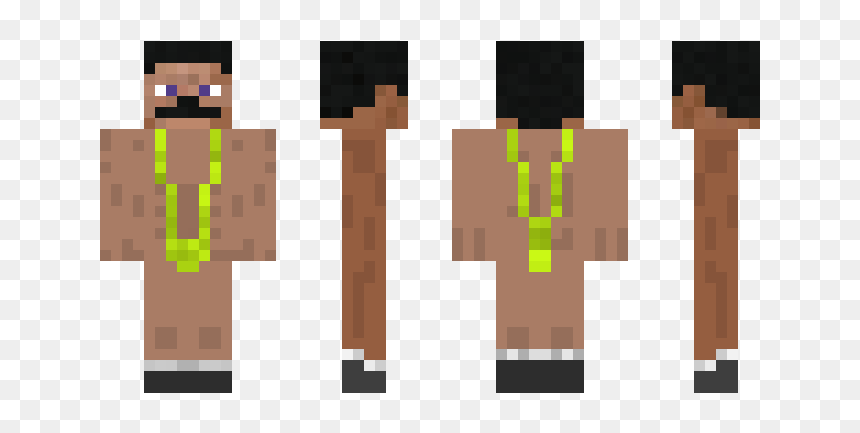 A skin cleanser should therefore have a neutral pH and be used daily (or more frequently if necessary), ensuring that all areas of the body, and particularly areas where oedema is present, are washed carefully to remove dead skin cells, dirt and excess sebum.
A skin cleanser should therefore have a neutral pH and be used daily (or more frequently if necessary), ensuring that all areas of the body, and particularly areas where oedema is present, are washed carefully to remove dead skin cells, dirt and excess sebum.
Lichterfeld et al (2015) described ‘dry’ and ‘humid’ skin areas, which require different considerations in daily care. ‘Dry skin’ areas include surfaces directly exposed to air or clothing such as the face, back and limbs, which require daily cleansing with a skin cleanser and warm water. ‘Humid skin’ areas include areas with natural skin folds such as the axilla, groin and under the breasts. Once cleansed, these areas require more attention to drying and they may require more frequent cleansing than ‘dry skin’ areas.
Skin drying
Drying the skin after cleansing reduces the risk of skin excoriation and colonisation of bacteria on the skin leading to infection (Snelling et al, 2011). Leaving the skin wet can also lead to damage through possible friction of damp skin and resulting skin cooling (Penzer and Ersser, 2010). Andrews (2013) suggested that just gently patting fragile skin after cleansing can leave it wet and prone to maceration. However, as rubbing the skin can damage the epidermis, Ersser et al (2005) recommended the less abrasive action of patting or gently rubbing the skin during drying and Ronda and Falce (2002) suggested that a soft cloth should be used.
Andrews (2013) suggested that just gently patting fragile skin after cleansing can leave it wet and prone to maceration. However, as rubbing the skin can damage the epidermis, Ersser et al (2005) recommended the less abrasive action of patting or gently rubbing the skin during drying and Ronda and Falce (2002) suggested that a soft cloth should be used.
When oedema is present, careful attention should be paid to ensure that any skin folds or creases are dried carefully. The areas between the toes should receive particular attention to reduce the risk of fungal infections developing.
Skin moisturising
For patients with, or at risk of oedema, moisturising of the skin after cleansing and drying is an indispensable part of skin care. Moisturisers assist in replacing the lipid film barrier on the skin that has been disturbed by washing and prevent stretched, oedematous skin from losing water (Nowicki and Siviour, 2013). Areas of dry, flaky or cracked skin indicate that the skin integrity has become damaged and the risk of infection increases because of the associated reduced immunity of the limb. Moisturising promotes skin integrity, making it more supple and less likely to become dry or cracked.
Moisturising promotes skin integrity, making it more supple and less likely to become dry or cracked.
An emollient, which covers the skin with a protective film to lock in the moisture, is preferable to cosmetic moisturisers with added perfume or lanolin, which can irritate or dry the skin further. Emollients are available as soap substitutes, lotions, creams and ointments with increasing degrees of greasiness created by the oil content of the formulation (Table 1). The choice of emollient depends on the condition of the skin, its hydration, known sensitivities and patient preference (Moffatt, 2006).
Table 1. Role of emollients in skin care
| Type of emollient | Use |
|---|---|
| Soap substitutes | As an alternative to soap or other skin cleansers to improve the skin. They do not lather well like other skin cleansers. Should be used with caution as the skin can become slippery following use (NHS website, 2017) They do not lather well like other skin cleansers. Should be used with caution as the skin can become slippery following use (NHS website, 2017) |
| Lotions | Light formulation that spreads easily on the skin. Used as a daily emollient for healthy skin |
| Creams | A thicker formulation, with higher oil content than lotions, which is absorbed quickly and is useful for mild/moderate dry skin |
| Ointments | The greasiest formulation, which is used for moderate to severe dry skin. Can be useful as a night-time emollient with a cream used during the day |
Emollients should be applied to the skin smoothly and gently following the direction of the hair growth, rather than using a rubbing action on the skin. This avoids the emollient clogging the hair follicles leading to inflammation (Moffatt, 2006). Some emollients are paraffin based and present a fire hazard if they are used liberally and the skin is not cleansed between applications (NHS, 2017).
This avoids the emollient clogging the hair follicles leading to inflammation (Moffatt, 2006). Some emollients are paraffin based and present a fire hazard if they are used liberally and the skin is not cleansed between applications (NHS, 2017).
Conclusion
Care of skin that is oedematous, or at risk of the development of oedema, is essential if skin health is to be promoted and infection avoided. The three components of skin care—cleansing, drying and moisturising—should be applied daily and are all as important as each other.
A good knowledge of the appropriate emollient to use according to the condition of the skin ensures that dryness can be avoided and the skin remains intact.
Loss of skin tone and elasticity – symptoms, causes, signs and methods of treatment in adults in the “SM-Clinic”
This disease is treated by a Dermatologist
, Cosmetologist
- What is it?
- About disease
- Species
- Symptoms
- Causes
- Diagnostics
- Expert opinion
- Treatment
- Prevention
- Rehabilitation
- Q&A
About the disease
Signs of young skin:
- density;
- uniform pinkish color;
- no redness due to broken capillaries;
- moisture and haze;
- outlined oval face.

Before reaching the age of 30-35 years, the rate of local metabolic processes is high: the stratum corneum constantly peels off and keeps the epidermis thin, the dermal layer is saturated with moisture and protein fibers, penetrated by a capillary network. Horn cells are constantly replaced by new ones, so traces of damage do not have time to remain.
In addition, the skin is supported by a strong framework of muscles, fat and bones. It follows the contours of the face and body, stretching and contracting as needed.
Aging and loss of skin tone is not a pathological but a natural physiological process. Over time, the rate of tissue renewal slows down, and changes occur in their structure:
- the epidermis becomes thinner;
- stratum corneum thickens, looks rougher and duller;
- the amount of moisture and collagen decreases;
- sweat and sebaceous glands atrophy;
- capillary blood flow is deteriorating.

Their severity, time of onset and rate of progression may vary.
Physiological aging must be distinguished from premature aging, when a person’s chronological age does not correspond to the condition of his skin. In the first case, the problem is solved by a cosmetologist and a plastic surgeon, in the second case, when the skin has lost its firmness and elasticity at a young age, it is possible to seek help from aesthetic medicine specialists only after a complete examination and identification of the cause of the rapid withering of the body.
Species
The classification of the predominant signs of skin aging is associated not only with the processes occurring in the epidermis and dermis, but also with the musculoskeletal structure, that is, with the frame.
- Deformed (ptotic). It is common in the Slavic genotype with a pronounced fatty layer and a soft oval face. The main sign of aging is the sagging of the tissues of the eyelids, the area under the eyes, cheeks, and chin.

- Tired. Like deformation, it proceeds in the form of ptosis. The absence of voluminous fat packs on the face leads to the sinking of the skin into the infraorbital cavity and the formation of furrows: nasolacrimal, nasolabial, etc.
- Finely wrinkled. It is characterized by weak deformation of soft tissues, an abundance of shallow wrinkles. The first age-related manifestations in representatives of this type occur early, but progression may not occur for decades.
- Muscular. A rare type of aging for Russia, which is more common in Asian countries. A developed layer of muscles, a minimum of fat and dense skin allow you to look young for a long time. Aging begins abruptly and actively after menopause.
There is no objectively favorable and unfavorable scenario for the development of age-related changes. With the right approach and the choice of an individual strategy for preserving youth, you can maintain a healthy skin condition for a long time for any type.
Symptoms
As the skin ages, there are:
- small wrinkles, the depth of which gradually increases;
- drooping of the eyebrows, formation of fatty hernias of the eyelids and bags under the eyes;
- decrease in turgor and loss of skin elasticity, the appearance of jellies;
- thinning and dryness;
- dull grey-yellow complexion;
- enlarged pores.
Not always described signs speak of aging: such a picture can be caused by improper care, exposure to the environment and certain diseases.
Causes
There are three mechanisms of skin aging.
- Chronoaging. The main factor triggering the withering of tissues is the age of a person. The body’s resources are limited, so metabolic processes gradually slow down. It is impossible to stop this process, but aging can be slowed down, especially in the early stages. After the onset of menopause, with a deficiency of sex hormones, skin aging is more intense.

- Photoaging. Ultraviolet radiation leads to pathological changes in the structure of the skin: the epidermis becomes unevenly thickened, the internal fibers are destroyed, the vascular walls are deformed. It also increases the risk of neoplasms and pigmentation.
- Glycoaging. A new theory of the destruction of skin tissue with an excess of sugar in the blood. Glucose molecules break down fats and protein, making the skin flabby and inelastic.
Thus, all the factors affecting the condition of the skin can be divided into two categories: endogenous (internal) and exogenous (external). The first group, in addition to the genetically programmed age at which the first signs of aging appear, includes:
- state of health;
- skin type and facial structure;
- stress and hormonal changes.
All processes in the body are interconnected, pathologies in one organ lead to changes in other systems. The skin is the largest organ in the state of which any pathology is reflected. The lack of hydration, including the increased sebum production characteristic of a particular person, slows down renewal. The type of face is not directly related to the quality of the skin, but bone absorption and soft tissue ptosis lead to deformation of the skin, which stretches or folds.
The lack of hydration, including the increased sebum production characteristic of a particular person, slows down renewal. The type of face is not directly related to the quality of the skin, but bone absorption and soft tissue ptosis lead to deformation of the skin, which stretches or folds.
The second group of external causes of aging, in addition to ultraviolet rays and the use of large amounts of sugar, include:
- poor ecology;
- smoking and other bad habits;
- lack or excess care;
- lack of sleep;
- stress.
There are different theories about which factors influence the skin aging process more: internal or external. Usually the influence of the environment is pronounced in youth, by the time of menopause, internal causes begin to outweigh.
Get advice
If you experience these symptoms, we recommend that you make an appointment with your doctor. Timely consultation will prevent negative consequences for your health.
To learn more about the disease, prices for treatment and sign up for a consultation with a specialist, you can call:
+7 (495) 292-39-72
Request a call back
Book online
Why SM-Clinic?
1
Treatment is carried out in accordance with clinical guidelines
2
Comprehensive assessment of the nature of the disease and treatment prognosis
3
Modern diagnostic equipment and own laboratory
4 900 03
High level of service and balanced pricing policy
Diagnosis
In dermatology and cosmetology, the main diagnostic method is examination and history taking.
The doctor sees the characteristic markers of aging: the skin has lost elasticity, tone, healthy color and smoothness, then determines the type of aging and suggests methods for correcting changes. According to the indications usually associated with differential diagnosis, other diagnostic methods may be prescribed to exclude skin, vascular, and soft tissue pathologies associated with the problem.
To record the results before and after treatment, photo documentation is used, including on special high-precision equipment in 3D format.
Expert’s opinion
American plastic surgeon Gerald Imber devoted a book called “Corridor of Youth” to the topic of facial aging. In his opinion, before pronounced hormonal changes, a person’s face can practically not change if the influence of external factors is excluded and delicate cosmetic correction is used. About 30-35 years old, a person is in the corridor of youth, when his appearance depends only on his efforts and desire to look young.
Work on oneself should be gentle and highly effective. The indiscriminate use of creams, masks and serums is just as harmful to the skin as a complete lack of care. If the skin has lost elasticity, only a dermatologist-cosmetologist will tell you what to do: is it time to resort to injections and hardware procedures, or is it good enough to protect and moisturize the tissues.
Levanovich Tatyana Vadimovna
Dermatologist, venereologist, mycologist, trichologist, cosmetologist, doctor of the highest category. Deputy chief physician for CEP at the SM-Clinic on the street. Academician Anokhin
Treatment
If there are already existing age-related changes, it is necessary to identify the cause of their appearance. Cosmetology should work together with lifestyle correction: a balanced diet, enough hours of sleep, regular walks in the fresh air.
Cosmetic methods for skin rejuvenation include:
- Conservative approach. In addition to routine care tailored to the skin type, the beautician prescribes strong prescription drugs, such as vitamin A-based ointments, to accelerate the renewal of the stratum corneum of the skin. You can work with the surface layer of the epidermis at home, but for a deeper effect, for example, with a median peel, it is better to contact a beautician.
- Hardware cosmetology.
 Depending on the mechanism of action on the tissue, the devices accelerate blood flow, outflow of lymphatic fluid, and local metabolic processes. Modern techniques also provide lifting with a reduction in tissue volume by point coagulation.
Depending on the mechanism of action on the tissue, the devices accelerate blood flow, outflow of lymphatic fluid, and local metabolic processes. Modern techniques also provide lifting with a reduction in tissue volume by point coagulation. - Injection methods. The preparations replenish the volume of soft tissues, fill wrinkles, relieve excess muscle tone, deliver useful components and moisture to the desired skin layers, and create a supporting framework.
When the skin has become flabby and has lost elasticity, cosmetology does not always have the desired effectiveness: in case of severe deformation, it is necessary to contact a plastic surgeon who will remove excess stretched tissue, move muscles and fat packs to the desired areas.
Prevention
You can slow down the aging process by minimizing the impact of exogenous factors:
- UV protection;
- systematic humidification;
- a balanced diet with sufficient protein and antioxidants;
- regular exercise and outdoor activities;
- sleep in a well-ventilated room for at least 7 hours a day.

It is important to undergo regular medical examinations and identify deviations from the normal functioning of internal organs. For example, with a deficiency of thyroid hormones, the skin will be dry, with a violation of renal filtration – pasty, edematous. Beauty and youth are an add-on to a good state of general health, so choosing cosmetics or performing cosmetic procedures is advisable only in conjunction with taking care of the body as a whole.
Rehabilitation
After performing injection or apparatus procedures, carefully follow medical recommendations. Despite the proven safety and low trauma, they can lead to complications: hematomas, filler migration, and inflammatory processes.
In the first week after cosmetic intervention, it is important to refrain from visiting baths and saunas, sunbathing and intense physical activity. Usually, the doctor gives specific recommendations about care during the recovery period, the possibility of drinking alcohol, taking specific medications and vitamins.
Question-answer
Contacting a skin care specialist is based on indications that may arise at any age, as well as if a person wants to correct the appearance to maintain youth or eliminate other shortcomings. Today, cosmetology uses highly effective techniques with long-term results, so supervision is usually not required.
Endogenous aging factors affect the entire skin. On examination, you can see that areas that interact with the external environment more often (neck, décolleté, hands) have more markers of aging, and therefore require the same careful attention as the face.
S.L. Kashutin, Ya.V. Gilmutdinov. “Dermatocosmetology” (textbook), 2015.
I. Kruglikov. “Skin aging as a mechanical phenomenon: the main “weak links” of aging skin”. // Aesthetic Medicine, Volume 17, No. 4, 2018.
V.I. Shepitko, G.A. Eroshenko, O.D. Lisachenko “Age aspects of the structure of the skin of the human face” // World of Medicine and Biology, 2013.
>
Diseases referred to Dermatologist
Acne (pimples)
Allergic dermatitis
Atopic dermatitis
warts
Human papillomavirus (HPV)
Ingrown toenail (onychocryptosis)
Herpes (herpes virus 1, 2 types)
Hyperhidrosis (sweating)
Foot hyperhidrosis (excessive sweating)
Hyperkeratosis
Hyperkeratosis of the nails
Nail fungus (onychomycosis)
foot fungus
demodicosis
Dermatitis
Nail deformation
diabetic foot
Ichthyosis
Keratoma
warts
molluscum contagiosum
contact dermatitis
Hives
Couperose
Lichen
calluses
corns
Nevuses (moles)
Neurodermatitis
Onychodystrophy
Onycholysis
Rash under the breast
Pityriasis versicolor
Papillomas
Inguinal epidermophytosis
Pediculosis
Skin pigmentation
plantar warts
Prickly heat
Psoriasis
Pemphigus
Rosacea
Seborrheic dermatitis
seborrhea
Cracked feet
Acne
Folliculitis
Furuncle (boil)
Furunculosis
Scabies
Eczema
Diseases referred to Cosmetologist
Demodicosis
Couperose
Nevuses (moles)
Skin pigmentation
Vascular sprockets
All doctors
VDNH metro station
Belorusskaya metro station
Molodyozhnaya metro station
Voikovskaya metro station
st. Kosmonavta Volkova, 9/2
Kosmonavta Volkova, 9/2
Staropetrovsky proezd, 7A, building 22
st. Clara Zetkin, 33 bldg. 28
m. Textile workers
Kurskaya metro station
Sevastopolskaya metro station
Chertanovskaya metro station
Krylatskoye metro station
Baltiyskaya metro station
Staropetrovsky proezd, 7A, building 22
90 002 st. Clara Zetkin, 33 bldg. 28
Maryina Roshcha
Novye Cheryomushki
Vodny Stadion
Ulitsa 1905 Goda
Yugo-Zapadnaya
Sukha revskaya
All doctors
Loading
Make an appointment with a dermatologist
fields marked with * are required to be completed
Name
Telephone *
By clicking on the button, you consent to the processing of your personal data
Registration through the site is preliminary. Our employee will contact you to confirm the appointment with a specialist.
We guarantee non-disclosure of personal data and the absence of advertising mailings to the phone number you specified. Your data is necessary to provide feedback and arrange an appointment with a clinic specialist.
Your data is necessary to provide feedback and arrange an appointment with a clinic specialist.
Licenses
Go to the license sectionGo to the legal information section
Volume loss and sagging skin: how to deal with these signs of aging
5 minutes. reading
Show more
With age, the skin and its structure change. By the age of 40, many notice a loss of volume, sagging contours, and deepening of wrinkles. This is due to a combination of internal processes and external factors.
Loose skin and the aging process
How we age depends in part on our genetics. Natural internal processes, combined with environmental factors and lifestyle, cause a slowdown in the basic functions of the skin. It is this slowdown that causes the most visible signs of aging: wrinkles, sagging, loss of volume, elasticity, radiance, and sagging facial contours. Flabbiness of the skin is associated with a decrease in the size of the cells that give it volume.
Flabbiness of the skin is associated with a decrease in the size of the cells that give it volume.
Loss of volume along with wrinkles, lack of radiance and loss of elasticity leads to the fact that the skin of the face begins to look older. Sometimes it is difficult to determine the loss of volume and oval of the face. The first signs of loss of lip volume usually appear when the lipstick begins to spread over the course of the day beyond the contours of the lips. Loss of facial volume leads to sagging skin, smoothing of the cheekbones and the appearance of a “turkey neck”. The general appearance of the face changes – it may look gloomy, sad or tired. The appearance of a fold between the nose and mouth, known as the nasolabial fold, is also associated with skin laxity and volume loss.
Signs and symptoms
How to recognize loose skin and volume loss
The beauty triangle clearly shows how the loss of volume changes the shape and structure of the face through small but transformative details.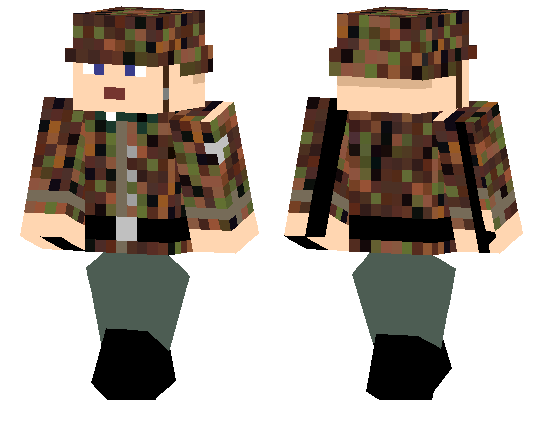
Young age is characterized by a uniform distribution of facial skin volume. The main features of a young face are clearly visible as part of the “beauty triangle”. It includes:
- high cheekbones;
- full cheeks;
- smooth skin;
- a thin, well-defined chin line.
The combination of these features creates a face shape that is broader at the top and narrower towards the chin. The general appearance is relaxed and friendly.
With age, due to the redistribution of volume, the triangle turns over. The following changes appear:
- wider and fuzzier jaw line;
- sagging skin that leads to deformity of the face oval;
- flatter cheeks;
- wrinkles;
- corners of the mouth go down;
- loss of volume (retraction) under the eyes and on the temples.
The combination of these factors makes the appearance more age.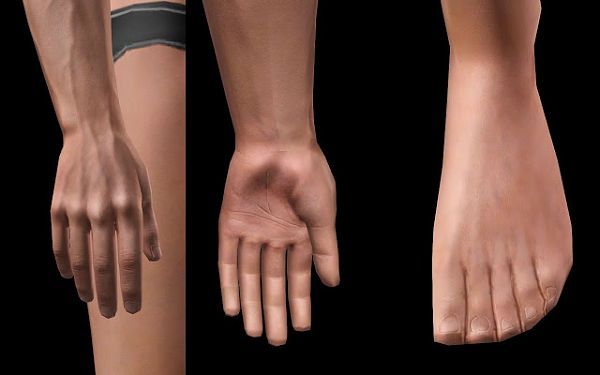 As you can see in the image, the triangle is inverted and its wider area is directed towards the lower part of the face. As the volume is redistributed and the skin sags, the perception of the face changes. The person may appear sad or tense, leading to incorrect judgments about mood or outlook.
As you can see in the image, the triangle is inverted and its wider area is directed towards the lower part of the face. As the volume is redistributed and the skin sags, the perception of the face changes. The person may appear sad or tense, leading to incorrect judgments about mood or outlook.
Contributing factors
What processes occur in the skin when it loses volume
Gradual reduction in the amount of “fillers” that keep the skin supple and smooth results in loss of volume, less defined contours and flabbiness of the skin in different layers:
Epidermis . With age, the epidermis becomes thinner, retains moisture worse and produces less lipids. The skin becomes drier, and as a result, wrinkles appear. The skin begins to sag, thins, becomes dull and uneven.
Derma and pancreas . The annual loss of collagen by 1% exacerbates the effect of thinning along with a decrease in the level of elastin and hyaluronic acid, which leads to sagging, loss of firmness and elasticity.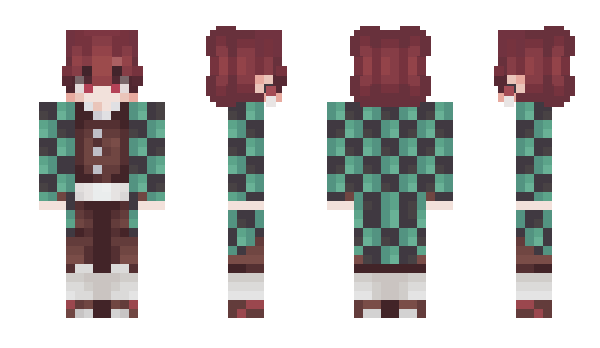 The plumping PFA cells that keep the skin “full” are reduced in size and number, leading to thinning of the skin. As a result, there is a redistribution of volumes and deformation of the oval of the face.
The plumping PFA cells that keep the skin “full” are reduced in size and number, leading to thinning of the skin. As a result, there is a redistribution of volumes and deformation of the oval of the face.
Over time, blood flow in the dermis and PFA, which delivers nutrients, slows down, leading to dullness, dehydration and delayed regeneration. The skin loses elasticity, deep wrinkles begin to form.
What factors cause skin laxity and volume loss
It’s not just our genetics that determines how we age. There are a number of other internal and external factors that lead to loss of skin volume.
- Hormonal changes . During puberty, estrogen levels are high. The skin is smooth and elastic, the contours of the face are clear. As we age, hormone levels decrease, and volumizing cells decrease both in size and number. This leads to a loss of volume and clarity of the facial contour.
- Lifestyle .
 Loss of volume, as part of skin aging, is caused by the same factors that contribute to wrinkles and loss of elasticity, radiance:
Loss of volume, as part of skin aging, is caused by the same factors that contribute to wrinkles and loss of elasticity, radiance:
1. Sun: Excessive exposure to the sun can damage the epidermal barrier, collagen, disrupt skin structure and trigger photoaging (premature aging of the skin caused by ultraviolet light).
2. Smoking: Nicotine and other chemicals in cigarettes further break down collagen.
These lifestyle factors combine to provoke oxidative stress. This happens when cells (including those that help skin look smooth and firm) attack molecules from within, “free radicals” are formed. As the structure weakens and collagen and elastin levels decrease, skin aging accelerates. Visible signs of aging appear on the surface of the skin, including wrinkles, loss of volume, elasticity and radiance.
Solutions
How can I deal with sagging skin and volume loss?
Although volume loss is a complex problem and in many ways inevitable, there are various ways to reduce its visible manifestations.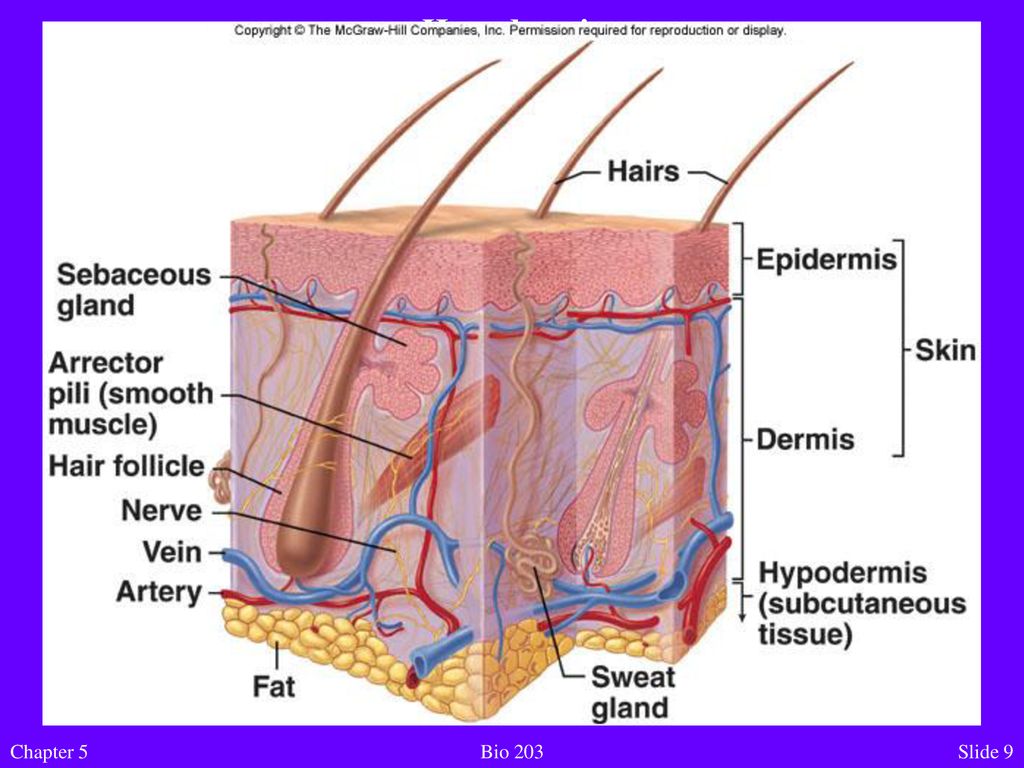
Volumising skin care products . Daily skin care with products specially formulated to restore volume provides sagging skin with the necessary care and can give a lifting effect. The following active ingredient is used in anti-aging formulas to eliminate the causes of skin laxity, loss of volume and changes in facial contours.
Hyaluronic acid . Skin cells produce hyaluronic acid, which is part of the connective tissue. One of its key functions is to retain moisture, and it is able to hold an amount of water 1000-10000 times its own weight (that is, one gram of hyaluronic acid holds from one to ten liters of water). As we age, the natural ability of the skin to produce hyaluronic acid decreases, and wrinkles begin to form and deepen.
The hyaluronic acid in Eucerin Hyaluron-Filler + Volume-Lift formulas intensively hydrates the skin and smooths out deep wrinkles.
Magnolol . Magnolol, a natural Magnolia bark extract, is a promising ingredient in anti-aging skin care products. Magnolol is a bioactive substance that has been used in traditional Chinese medicine for centuries to treat a wide range of diseases. Now its cosmetic effect is also used in modern procedures that stimulate collagen production and give the skin a toned look and smoothness.
Magnolol is a bioactive substance that has been used in traditional Chinese medicine for centuries to treat a wide range of diseases. Now its cosmetic effect is also used in modern procedures that stimulate collagen production and give the skin a toned look and smoothness.
Magnolol enhances collagen synthesis by fibroblasts, and also increases the size and number of volume-giving cells in the subdermal layer of the skin, “filling” areas with reduced volume (in vitro).
Magnolol is found in Eucerin Hyaluron-Filler + Volume-Lift 9 formulas0003
Oligopeptides . Peptides are needed for the synthesis of collagen and elastin. Unfortunately, the molecular size of these substances is large enough to penetrate the dermis. But modern formulas contain oligopeptides (small peptide molecules) that are effective against age-related changes.
Eucerin Hyaluron-Filler + Volume-Lift formulas contain oligopeptides from Pimpinella Anisum fruits (seeds). Eucerin Clinical Research Consultant Dr. Scholermann says, “It is this type of natural peptide that has the ability to stimulate and support collagen production. It activates the metabolism in the skin, re-activates the interaction of its cells and helps to strengthen the connective tissue.”
Scholermann says, “It is this type of natural peptide that has the ability to stimulate and support collagen production. It activates the metabolism in the skin, re-activates the interaction of its cells and helps to strengthen the connective tissue.”
Oligopeptides stimulate fibroblasts, enhancing their ability to produce collagen. In this way, oligopeptides help the skin regain its youthful skin density, providing a lifting and firming effect.
Dermatological treatments
If you are still concerned about the loss of skin volume, a dermatologist may recommend one of the following treatments.
Non-invasive treatments: peeling . Skin renewal leads to reduced signs of age
Minimally invasive treatments: fillers . Injections are used for temporary volume filling and immediate short-term results. Typically, fillers are used on the cheeks, temples and lips or under the eyes. Injectable hyaluronic acid can also help with wrinkles.



 doi: 10.1128/spectrum.00006-23. Epub 2023 Apr 6.
doi: 10.1128/spectrum.00006-23. Epub 2023 Apr 6.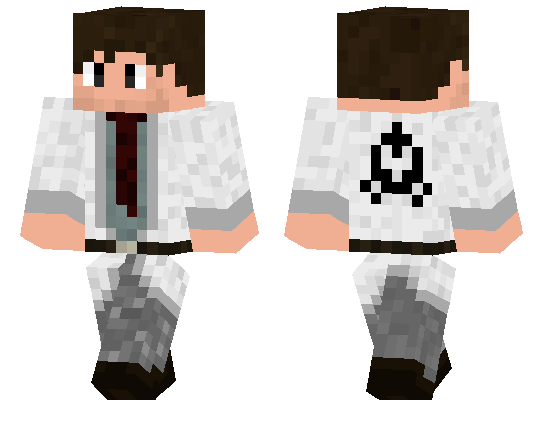
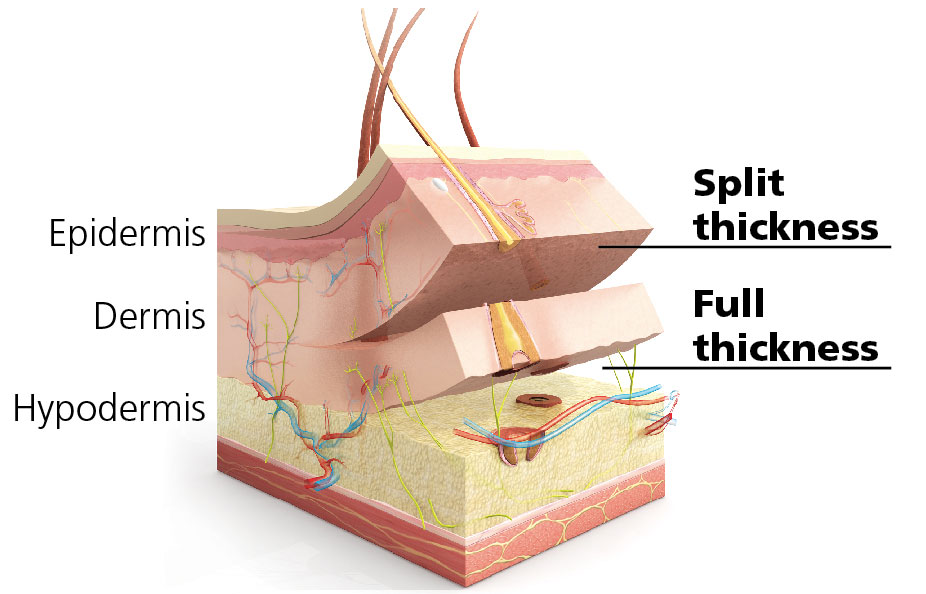



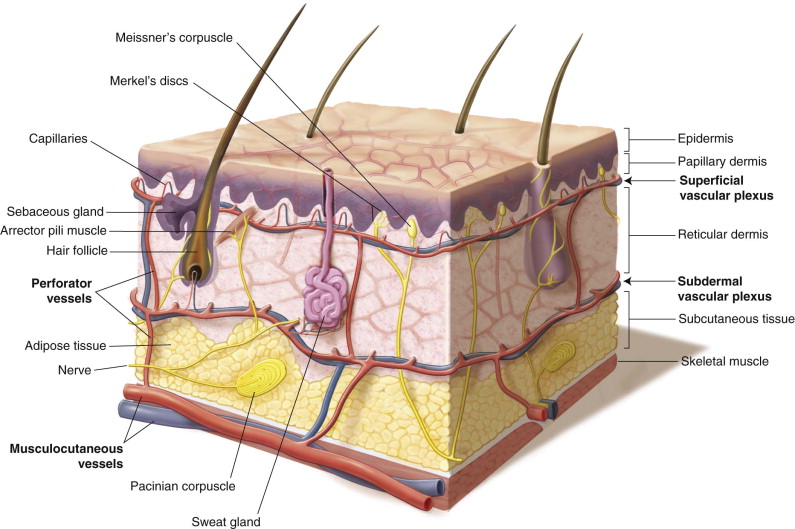 Depending on the mechanism of action on the tissue, the devices accelerate blood flow, outflow of lymphatic fluid, and local metabolic processes. Modern techniques also provide lifting with a reduction in tissue volume by point coagulation.
Depending on the mechanism of action on the tissue, the devices accelerate blood flow, outflow of lymphatic fluid, and local metabolic processes. Modern techniques also provide lifting with a reduction in tissue volume by point coagulation.
 Loss of volume, as part of skin aging, is caused by the same factors that contribute to wrinkles and loss of elasticity, radiance:
Loss of volume, as part of skin aging, is caused by the same factors that contribute to wrinkles and loss of elasticity, radiance: